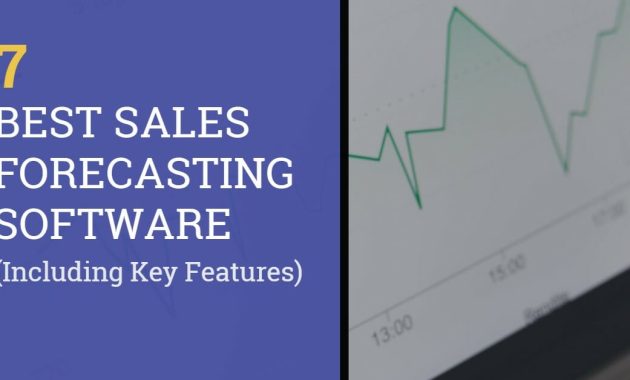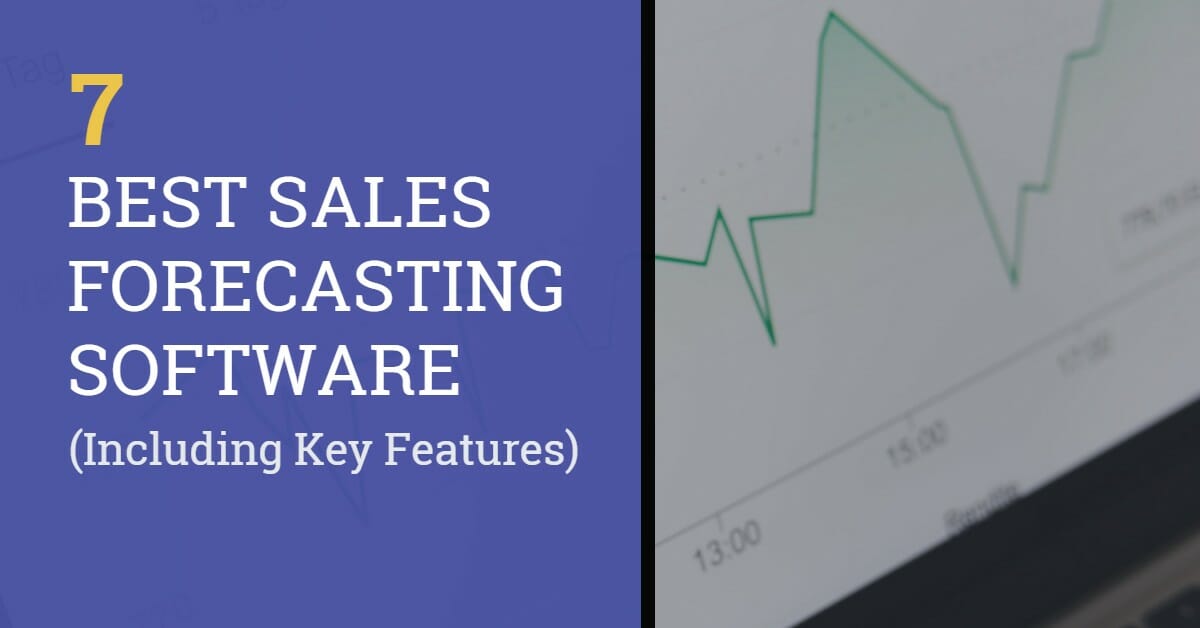
Simplify Forecasting in Business Intelligence Software: A Practical Guide
In the rapidly evolving landscape of modern business, the ability to accurately predict future trends is no longer a luxury; it’s a necessity. Businesses of all sizes rely on forecasting to make informed decisions, optimize resource allocation, and maintain a competitive edge. However, the complexity of traditional forecasting methods can often be a significant hurdle. Fortunately, business intelligence (BI) software offers powerful solutions to simplify forecasting and make it accessible to everyone.
This comprehensive guide explores how business intelligence software empowers organizations to simplify forecasting. We’ll delve into the challenges of traditional methods, the benefits of BI-driven forecasting, and practical steps to implement these strategies. Ultimately, this article aims to equip you with the knowledge to leverage BI tools effectively. This will help you to improve your forecasting accuracy and drive better business outcomes.
The Limitations of Traditional Forecasting Methods
Before embracing the power of BI, it’s crucial to understand the shortcomings of conventional forecasting techniques. Many organizations still rely on spreadsheets, manual data entry, and static reports. These methods often suffer from several limitations:
- Time-Consuming Data Collection and Preparation: Gathering, cleaning, and preparing data for forecasting can be incredibly time-intensive. Manual processes are prone to errors. They also limit the frequency of forecasts.
- Lack of Real-Time Insights: Traditional methods often analyze historical data. They struggle to incorporate real-time information or external factors. This results in forecasts that may quickly become outdated.
- Limited Analytical Capabilities: Spreadsheets and basic tools offer limited analytical capabilities. They can struggle to handle complex datasets or identify subtle patterns. This limits the accuracy of forecasts.
- Difficulty in Collaboration and Sharing: Sharing forecasts and collaborating across teams can be cumbersome. This can lead to inconsistencies and delays in decision-making.
- Human Error and Subjectivity: Manual processes are susceptible to human error. They also involve subjective interpretations of data, which can impact forecast accuracy.
These limitations can hinder an organization’s ability to make timely and accurate decisions. They also put them at a disadvantage in a dynamic market environment. The good news is that business intelligence software offers a powerful alternative.
How Business Intelligence Software Simplifies Forecasting
Business intelligence software is designed to overcome the limitations of traditional forecasting methods. It provides a comprehensive platform for data integration, analysis, and visualization. Here’s how BI software helps simplify forecasting:
Automated Data Integration
BI tools can connect to various data sources. These include databases, spreadsheets, and cloud services. This automated data integration eliminates the need for manual data entry and reduces the risk of errors. This saves time and improves data accuracy.
Advanced Analytics and Modeling
BI software incorporates sophisticated analytical capabilities. These include statistical modeling, machine learning, and predictive analytics. These tools can analyze complex datasets. They can also identify patterns and trends that would be impossible to detect manually. This leads to more accurate and reliable forecasts.
Real-Time Data and Reporting
BI platforms provide real-time data visualization and reporting. This allows users to monitor key performance indicators (KPIs) and track progress against forecasts in real-time. This enables faster decision-making and proactive adjustments.
User-Friendly Interfaces and Dashboards
BI software offers intuitive interfaces and customizable dashboards. This allows users to easily create and share forecasts. They can also collaborate on analyses without requiring specialized technical skills. This democratizes the forecasting process.
Scenario Planning and What-If Analysis
BI tools enable scenario planning and what-if analysis. Users can simulate different scenarios and assess their potential impact on forecasts. This helps organizations prepare for various outcomes. It also allows them to make more informed strategic decisions.
Key Features of BI Software for Forecasting
To effectively simplify forecasting, consider these essential features when evaluating business intelligence software:
- Data Integration Capabilities: The ability to connect to diverse data sources is crucial. This ensures that all relevant data is incorporated into the forecasting process.
- Advanced Analytics and Predictive Modeling: Look for tools that support statistical modeling, time series analysis, and machine learning algorithms.
- Data Visualization and Reporting: Interactive dashboards and reports are essential for communicating forecasts effectively.
- Collaboration and Sharing: Features that allow users to share forecasts, collaborate on analyses, and provide access controls are important.
- Automation and Scheduling: Automate data refresh, report generation, and forecast updates to save time and ensure consistency.
- User-Friendly Interface: A user-friendly interface makes it easier for non-technical users to create and interpret forecasts.
Implementing BI for Simplified Forecasting: A Step-by-Step Approach
Successfully implementing BI-driven forecasting involves a structured approach. Following these steps will help you simplify forecasting and achieve optimal results:
- Define Your Forecasting Goals: Clearly define the business objectives that forecasting will support. Identify the key metrics and decisions that will be influenced by the forecasts.
- Identify Data Sources: Determine which data sources are relevant to your forecasting needs. These could include sales data, marketing data, financial data, and external market data.
- Select a BI Tool: Choose a BI software solution that aligns with your business requirements. Consider factors such as ease of use, features, scalability, and cost. [See also: Choosing the Right BI Software for Your Business]
- Integrate and Clean Data: Connect your BI tool to your data sources. Clean and transform the data to ensure accuracy and consistency.
- Build Forecasting Models: Use the BI tool’s analytical capabilities to build forecasting models. Select the appropriate techniques based on your goals and data.
- Visualize and Analyze Forecasts: Create interactive dashboards and reports to visualize your forecasts. Analyze the results and identify potential areas for improvement.
- Monitor and Refine: Continuously monitor the accuracy of your forecasts. Refine your models and adjust your approach as needed.
Benefits of Simplified Forecasting with Business Intelligence
By leveraging business intelligence software to simplify forecasting, organizations can reap a multitude of benefits:
- Improved Accuracy: Advanced analytics and real-time data integration lead to more accurate forecasts.
- Faster Decision-Making: Quick access to insights enables faster and more informed decisions.
- Reduced Costs: Automation and streamlined processes reduce the time and resources required for forecasting.
- Enhanced Collaboration: Improved collaboration and sharing of forecasts across teams.
- Increased Agility: The ability to adapt quickly to changing market conditions.
- Better Resource Allocation: More accurate forecasts help optimize resource allocation.
- Competitive Advantage: Improved forecasting provides a significant competitive advantage.
The ability to simplify forecasting with BI tools is a game-changer for businesses. It enables them to make more informed decisions, optimize resource allocation, and stay ahead of the competition. By implementing the strategies outlined in this guide, you can empower your organization to leverage the full potential of BI-driven forecasting. This will drive better business outcomes and ensure long-term success. Business intelligence software is not just a tool; it’s a strategic asset. It helps businesses navigate the complexities of the modern market.
Real-World Examples of Simplified Forecasting
Let’s look at a few examples of how businesses are using BI to simplify forecasting:
- Retail: A retail chain uses BI to forecast sales for different product categories. They use it to optimize inventory levels and manage supply chains. This reduces stockouts and minimizes waste.
- Manufacturing: A manufacturing company uses BI to forecast demand for its products. This optimizes production schedules and reduces lead times. This improves customer satisfaction.
- Healthcare: A healthcare provider uses BI to forecast patient volume. This helps to optimize staffing levels and resource allocation. This improves patient care and reduces costs.
- Finance: A financial institution uses BI to forecast loan defaults. This helps to manage risk and improve profitability.
These examples demonstrate the versatility and impact of BI-driven forecasting across various industries. They showcase the ability to simplify forecasting and drive tangible results.
Overcoming Challenges in BI Forecasting
While business intelligence software offers significant advantages, some challenges may arise during implementation. Being aware of these challenges and planning accordingly will help ensure a successful transition:
- Data Quality: Poor data quality can undermine the accuracy of forecasts. Invest in data cleansing and validation processes.
- Model Complexity: Overly complex models can be difficult to understand and maintain. Start with simpler models and gradually increase complexity.
- User Adoption: Ensure that users are trained on the BI tool and understand how to interpret forecasts. Promote a culture of data-driven decision-making.
- Integration Issues: Integrating BI software with existing systems can be challenging. Plan the integration process carefully.
- Change Management: Implementing new forecasting processes requires change management. Communicate the benefits of the changes to all stakeholders.
The Future of Forecasting and Business Intelligence
The future of forecasting is inextricably linked to business intelligence. As technology advances, we can expect to see even greater integration of artificial intelligence (AI) and machine learning (ML) in forecasting tools. These advancements will further automate and refine the forecasting process. They will also improve the accuracy and provide deeper insights. This will enable businesses to make even more informed decisions. The ability to simplify forecasting will become even more crucial. This will help organizations stay competitive in a rapidly changing world.
In conclusion, business intelligence software is an essential tool for organizations seeking to simplify forecasting. By embracing BI, businesses can overcome the limitations of traditional methods. They can also leverage advanced analytics, real-time data, and user-friendly interfaces. This will lead to more accurate forecasts, better decision-making, and improved business outcomes. The journey to simplify forecasting is a journey towards a more data-driven and successful future.

